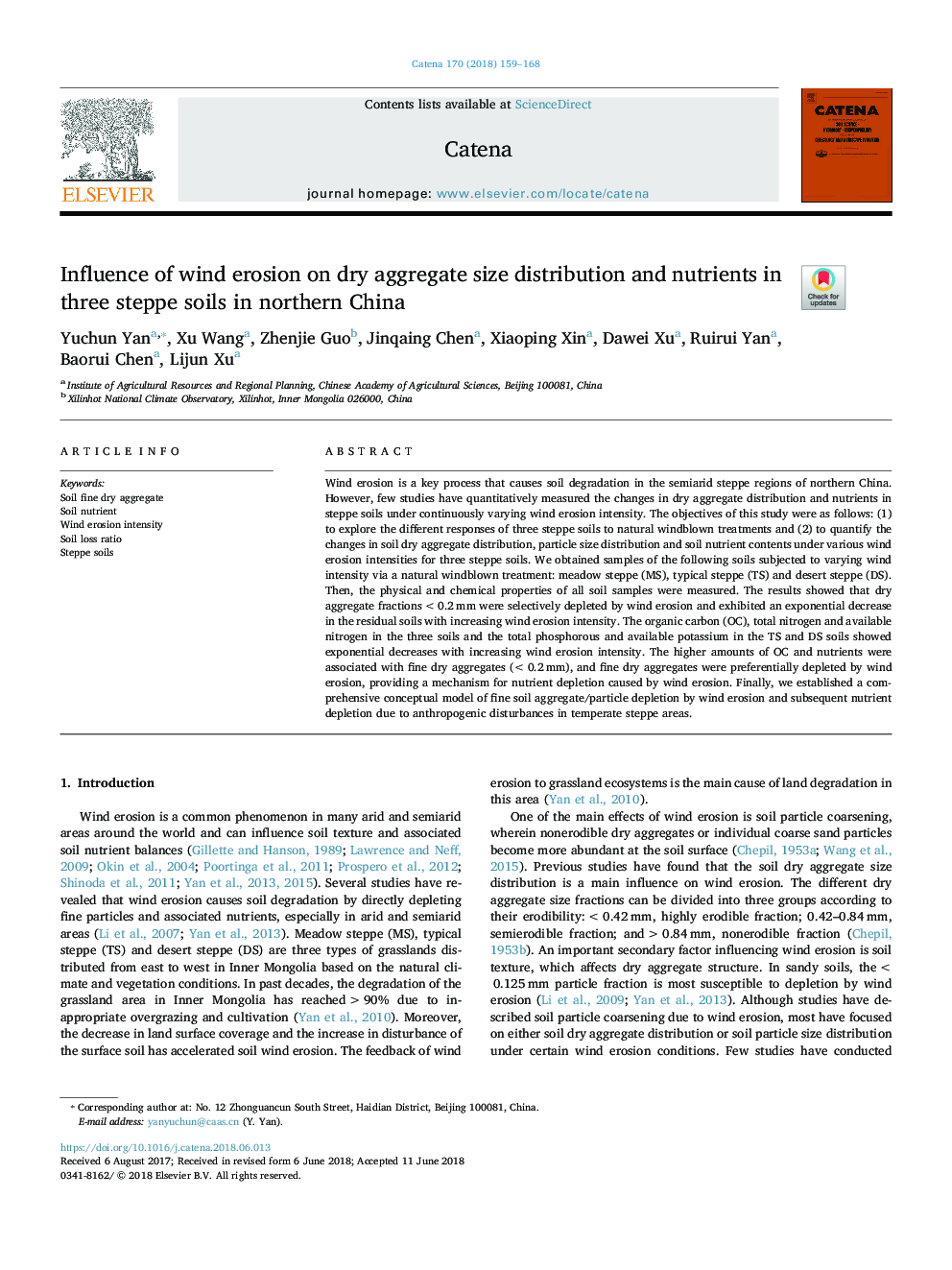| Article ID | Journal | Published Year | Pages | File Type |
|---|---|---|---|---|
| 8893394 | CATENA | 2018 | 10 Pages |
Abstract
Wind erosion is a key process that causes soil degradation in the semiarid steppe regions of northern China. However, few studies have quantitatively measured the changes in dry aggregate distribution and nutrients in steppe soils under continuously varying wind erosion intensity. The objectives of this study were as follows: (1) to explore the different responses of three steppe soils to natural windblown treatments and (2) to quantify the changes in soil dry aggregate distribution, particle size distribution and soil nutrient contents under various wind erosion intensities for three steppe soils. We obtained samples of the following soils subjected to varying wind intensity via a natural windblown treatment: meadow steppe (MS), typical steppe (TS) and desert steppe (DS). Then, the physical and chemical properties of all soil samples were measured. The results showed that dry aggregate fractions <0.2â¯mm were selectively depleted by wind erosion and exhibited an exponential decrease in the residual soils with increasing wind erosion intensity. The organic carbon (OC), total nitrogen and available nitrogen in the three soils and the total phosphorous and available potassium in the TS and DS soils showed exponential decreases with increasing wind erosion intensity. The higher amounts of OC and nutrients were associated with fine dry aggregates (<0.2â¯mm), and fine dry aggregates were preferentially depleted by wind erosion, providing a mechanism for nutrient depletion caused by wind erosion. Finally, we established a comprehensive conceptual model of fine soil aggregate/particle depletion by wind erosion and subsequent nutrient depletion due to anthropogenic disturbances in temperate steppe areas.
Keywords
Related Topics
Physical Sciences and Engineering
Earth and Planetary Sciences
Earth-Surface Processes
Authors
Yuchun Yan, Xu Wang, Zhenjie Guo, Jinqaing Chen, Xiaoping Xin, Dawei Xu, Ruirui Yan, Baorui Chen, Lijun Xu,
